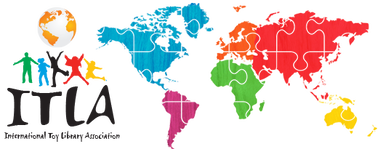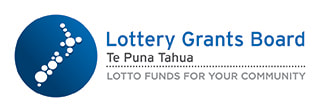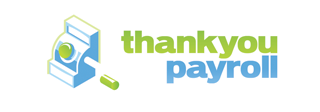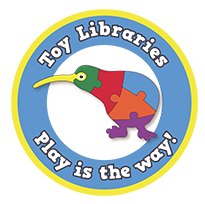History of International Toy Libraries
It is generally acknowledged that the first toy lending library in the United States opened in Los Angeles in 1935. It has also been verified by the International Toy Library Association as the oldest in the world. Its formation began in the summer of 1934 during the "Great Depression".
Toy Lending Libraries can be found in many parts of the world. Here is a brief look at how some of them were started.
Sweden - The person who gets credit for starting the toy library movement in Europe is Dr. Karin Stensland Junker. She had two children with severe handicaps, and was disappointed in the services available to children with disabilities and their families. She started a preschool in 1963 with the mother of another handicapped child. They called the school "lekotek" which is Swedish for "play library". The idea spread throughout Scandinavia, and later to Europe and the United States. Loaning toys was only part of the program, which emphasized training in special education or child development.
Norway - In 1969 a preschool teacher, Unni Boehmer, began the first Norwegian toy library using Lekotek as a model. Within four years it had more than 600 clients. As the concept spread, they came under the sponsorship of the Ministry of Social Affairs.
United Kingdom - The first British toy library was set up in 1967 by Jill Norris, a Froebel-trained teacher, who had two children who were handicapped. The idea began with families exchanging toys in their own homes. Members then began fundraising to purchase toys that cost more than most families could afford. Other toy libraries were set up by families with children who had special needs. In 1972 the Toy Libraries Association was formed, with members throughout the country.
Scotland - The playbus movement started in the 1970s. The buses remain the largest sector of mobile community resources. Most playbuses have provisions for parents as well as children. They encourage play on the bus, and provide an area for tea and conversation.
Canada - The Canadian Association of Toy Libraries (CATL) was founded in 1975 under the leadership of Joanna von Levetzow, a social worker from England. By 1985 there were more than 200 toy libraries around Canada, with some especially for children with handicaps.
Netherlands - The first toy library in Holland started in 1973 in Haarlem. This toy library was intended for children with handicaps, just like the ones that immediately followed. Once there were ten toy libraries they formed a national organisation called Speel-o-theek Nederland.
Australia - Much of the credit for developing toy libraries in Australia goes to Annetine Forell. She visited England and discovered the toy libraries there, so she set up one in Melbourne in 1971. In 1973 she was awarded a Churchill Fellowship to study toy library development in Sweden, Norway, England and America. Inspired by what she saw, she decided to make the toy library in Melbourne a model for others, and encourage the founding of toy libraries throughout Australia. The Noah s Ark Toy Library for children with handicaps has grown to become one of the most comprehensive in the world. Funding mostly comes from the Health Commission and the Department of Social Security. In 1985 it housed over 10,000 toys and games for children up to 21 years of age. The library was the catalyst in starting the Australian Association of Toy Libraries, and the Australian Association of Toy Libraries for the Handicapped. In 1983 Forell was awarded the Order of Australia for her services to her country.
Switzerland - With four official languages, cooperation among toy libraries in Switzerland requires multilingual expertise. In 1986 there were more than 60 toy libraries in operation with 40 toy corners in public libraries. They are funded by a variety of charitable groups, public funds, membership fees, and commercial entity. Most are intended for families in general while some focus on children with cultural or social difficulties. The Swiss Association of Toy Libraries was formed in 1980.
Russia - The first toy library opened in Moscow in the summer of 1992.
Israel - Judith Kirschbaum heads the "0-3 Project" run by the municipality of Or-Yeheda's Department of Education. It is a small town near Tel-Aviv many of whose residents came from Iraq, Libya, Georgia, and East Russia. The 0-3 Project started in 1984 in order to enrich young parents and give them tools for raising their children to become healthy and happy adults. The program served about 300 hundred families and included two toy libraries in 1994.
Zimbabwe - In 1986, the Zimbabwe Toy Library run by volunteers, and without state or civic funding. At that time they were serving about 40 children each week. Most of their members were from residential institutions and not accompanied by parents. Their goal that year was to educate the public through printing brochures, and having Toy Library boxes with toys in doctor's waiting rooms.
India - In 1993 in Bombay, after attending an International Toy Association conference they were able to set up 16 more toy/game libraries there. Nine were in Children's Aid Societies, and three were set up by individuals under their guidance. They also started two toy/game libraries in jails, for women prisoners and for children under five who are incarcerated with their mothers.
Toy Lending Libraries can be found in many parts of the world.
Visit the International Toy Library Association website for more information, www.itla-toylibraries.org
Toy Lending Libraries can be found in many parts of the world. Here is a brief look at how some of them were started.
Sweden - The person who gets credit for starting the toy library movement in Europe is Dr. Karin Stensland Junker. She had two children with severe handicaps, and was disappointed in the services available to children with disabilities and their families. She started a preschool in 1963 with the mother of another handicapped child. They called the school "lekotek" which is Swedish for "play library". The idea spread throughout Scandinavia, and later to Europe and the United States. Loaning toys was only part of the program, which emphasized training in special education or child development.
Norway - In 1969 a preschool teacher, Unni Boehmer, began the first Norwegian toy library using Lekotek as a model. Within four years it had more than 600 clients. As the concept spread, they came under the sponsorship of the Ministry of Social Affairs.
United Kingdom - The first British toy library was set up in 1967 by Jill Norris, a Froebel-trained teacher, who had two children who were handicapped. The idea began with families exchanging toys in their own homes. Members then began fundraising to purchase toys that cost more than most families could afford. Other toy libraries were set up by families with children who had special needs. In 1972 the Toy Libraries Association was formed, with members throughout the country.
Scotland - The playbus movement started in the 1970s. The buses remain the largest sector of mobile community resources. Most playbuses have provisions for parents as well as children. They encourage play on the bus, and provide an area for tea and conversation.
Canada - The Canadian Association of Toy Libraries (CATL) was founded in 1975 under the leadership of Joanna von Levetzow, a social worker from England. By 1985 there were more than 200 toy libraries around Canada, with some especially for children with handicaps.
Netherlands - The first toy library in Holland started in 1973 in Haarlem. This toy library was intended for children with handicaps, just like the ones that immediately followed. Once there were ten toy libraries they formed a national organisation called Speel-o-theek Nederland.
Australia - Much of the credit for developing toy libraries in Australia goes to Annetine Forell. She visited England and discovered the toy libraries there, so she set up one in Melbourne in 1971. In 1973 she was awarded a Churchill Fellowship to study toy library development in Sweden, Norway, England and America. Inspired by what she saw, she decided to make the toy library in Melbourne a model for others, and encourage the founding of toy libraries throughout Australia. The Noah s Ark Toy Library for children with handicaps has grown to become one of the most comprehensive in the world. Funding mostly comes from the Health Commission and the Department of Social Security. In 1985 it housed over 10,000 toys and games for children up to 21 years of age. The library was the catalyst in starting the Australian Association of Toy Libraries, and the Australian Association of Toy Libraries for the Handicapped. In 1983 Forell was awarded the Order of Australia for her services to her country.
Switzerland - With four official languages, cooperation among toy libraries in Switzerland requires multilingual expertise. In 1986 there were more than 60 toy libraries in operation with 40 toy corners in public libraries. They are funded by a variety of charitable groups, public funds, membership fees, and commercial entity. Most are intended for families in general while some focus on children with cultural or social difficulties. The Swiss Association of Toy Libraries was formed in 1980.
Russia - The first toy library opened in Moscow in the summer of 1992.
Israel - Judith Kirschbaum heads the "0-3 Project" run by the municipality of Or-Yeheda's Department of Education. It is a small town near Tel-Aviv many of whose residents came from Iraq, Libya, Georgia, and East Russia. The 0-3 Project started in 1984 in order to enrich young parents and give them tools for raising their children to become healthy and happy adults. The program served about 300 hundred families and included two toy libraries in 1994.
Zimbabwe - In 1986, the Zimbabwe Toy Library run by volunteers, and without state or civic funding. At that time they were serving about 40 children each week. Most of their members were from residential institutions and not accompanied by parents. Their goal that year was to educate the public through printing brochures, and having Toy Library boxes with toys in doctor's waiting rooms.
India - In 1993 in Bombay, after attending an International Toy Association conference they were able to set up 16 more toy/game libraries there. Nine were in Children's Aid Societies, and three were set up by individuals under their guidance. They also started two toy/game libraries in jails, for women prisoners and for children under five who are incarcerated with their mothers.
Toy Lending Libraries can be found in many parts of the world.
Visit the International Toy Library Association website for more information, www.itla-toylibraries.org









